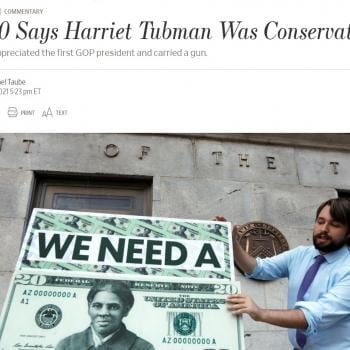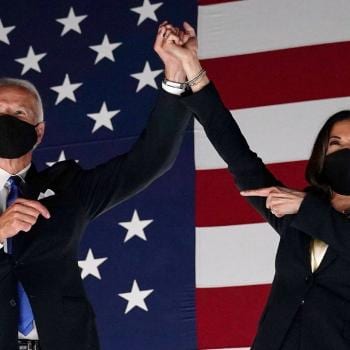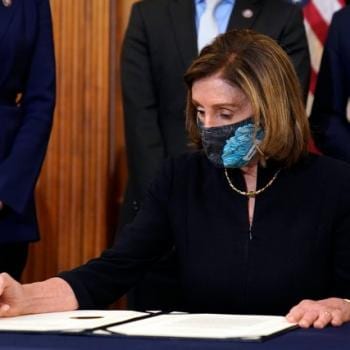These days, Republicans spend a lot of time decrying big government. This is ironic given that they want the government to keep trans people out of public restrooms and require women to bury or cremate miscarried fetuses and embryos, among other things, but it is problematic for several other reasons as well. When conservatives talk about “big government,” they’re usually thinking of social programs such as welfare or Medicaid, which they perceive as transferring their hard-earned money to those who choose not to work or better themselves. We can talk about the problems with that perception—and there are many—but what’s less talked about are the whole host of ways government benefits even those who have never had a need to use the public programs pilloried as “handouts.”
Let’s leave aside the benefits we receive from well maintained roads, a national network of libraries, and our national park system, and instead look for a moment at consumer protections. Let’s start with cowboy chaps.

With this image in mind, let’s look at an excerpt from an article published by Barbara Young Welke in the Journal of American History in 2014:
About a month before Christmas 1944, Milton Henry asked the doorman in his apartment building how many children he had and how old they were. “By Christmas,” Mr. Henry had promised, “he would have something for the two younger boys; he was in that business, toys.” And, indeed, a few days before Christmas, Mr. Henry invited James McCormack up to his apartment and presented him with a gift: two cowboy suits, “Gene Autry Offcial Ranch Outfits” that included hat, vest, kerchief, holster, and chaps for McCormack’s two youngest sons, Jimmie, age ten, and Tommy, age seven. . . . Neither man in his darkest dreams would have imagined that two weeks later the gift would leave seven-year-old Tommy McCormack so horribly burned over his lower body that his blood simply clotted in the veins and arteries of his legs or that after suffering four months of agony along with their son, James and Catherine McCormack would bury their youngest child.
Why and how was Tommy McCormack so badly burned?
Tommy’s death, his family’s loss, was all the more tragic because Tommy was not the first child to be injured or die in an accident involving a Gene Autry cowboy suit. Between late 1942 and continuing to at least 1954, an untold number of children were horribly burned when the fuzzy fabric on the chaps of the Gene Autry cowboy suits they were wearing came in contact with a naked flame or spark and were consumed by flames in a matter of seconds. It was three long years from the first incidents before families, fire and medical personnel, the media, lawyers, and legislators began to understand the fabric that manufacturers had used on the chaps of the Gene Autry cowboy suits as the cause of these tragedies.
It seems the cloth used in these children’s cowboy suits was so flammable that the entire outfit would go up in a matter of seconds, before the child or parents had time to even attempt to put the fire out—or register what was going on.
Even then news of and response to the tragedy remained fragmented and incomplete. And so more children were injured and died. Ultimately, at least one hundred families whose children had been injured or died in incidents involving Gene Autry cowboy suits brought lawsuits against those involved in the manufacture and sale of the children’s suit and its component parts. Most of those who brought suit received a financial settlement for their loss. And after eight long years of wrangling, in 1953, Congress passed the first federal law intended to protect consumers against “flammable fabrics.”
If you’re like me, I’m guessing you literally did not know that there are laws ensuring that the fabrics we wear are not ultra-flammable like the cloth used in the cowboy chaps discussed above. In fact, children’s pajamas in particular are required by law to be made with cloth that is fire-retardant. Even cloth that is not treated to be specifically fire retardant, though, is not permitted to be as flammable as the cloth in Tommy McCormack’s cowboy chaps.
Welke explains that in the decades after WWII, Americans became increasingly dependent on a consumer-based economy even as the distance between the consumer and the manufacturer grew. Americans no longer personally knew those from whom they purchased ready-made goods, and the supply chain itself became more complicated. Consumer culture had previously relied on the idea that the buyer should be on guard against a bad deal, but buyers no longer had the information they needed to identify what products could be trusted. It was in this context that consumer protections were born.
And it’s not just clothing or other related products, either. It’s also food. Remember that Abraham Lincoln’s mother died from “milk sickness” after drinking milk from a cow that had eaten snakeroot. I remember learning about this as a child and wondering how this could have happened. After all, the milk we got from the grocery store was all packaged and labeled—milk always seemed so safe to me, and that’s because, thanks to the FDA, it is. We sometimes hear of vegetables being recalled for salmonella, but the fact that these vegetables are quickly identified and removed—and that it happens infrequently enough to make the news—speaks to the efficiency of consumer protection agencies.
We can walk into a grocery store confident that there is nothing for sale there that will cause us to sicken and die upon eating it because of the government. I don’t think we realize how significant this is—or how important. This is perhaps a case where government protections and regulation have been so successful that we as a population have largely forgotten why we needed them in the first place. Today, let’s take a moment to remember, and to appreciate having a government big enough to create and maintain such protections.















